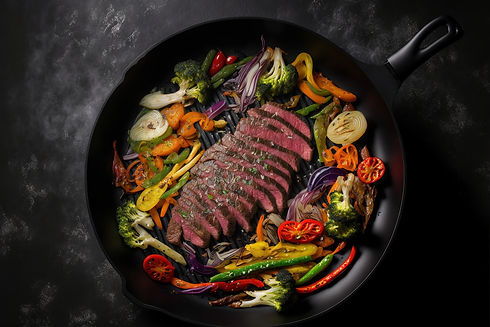Understanding the Weight Loss Plateau
Go back to Getting Started

What is the weight loss plateau?
The weight loss plateau is a period during a weight loss program where no matter what you do, the weight just doesn’t come off.
You may eat healthily, diet, or exercise, but the scale doesn’t move.
We understand that this period is frustrating and can have adverse psychological effects. The weight loss plateau is often why people struggle to stick to a lifestyle change - but it’s essential not to be disheartened or discouraged and follow our steps to get you through.
It usually happens to everyone who goes on a weight loss program.
Why does it occur?
Weight loss plateaus and glycogen have been found to have a significant correlation.
When the body is in a caloric deficit and reduces calorie intake, it draws from its glycogen stores in the muscles and liver for energy. Water is excreted as glycogen is used up, resulting in a rapid initial weight loss.
However, when muscle mass decreases due to the utilization of glycogen and fat, this correlates with a weight loss plateau.
Science tells us that the primary reason may be a reduction in muscle. As we get older, we lose power.
As muscle mass declines, so does the metabolic rate. Thus, you will be burning less energy.
There may be a point where the calorie input is the same as the calorie output, and thus a weight loss plateau occurs.
What causes the weight loss plateau? Is it just you?
No, it usually happens to everyone. Understand that there is no single cause of a weight loss plateau. Instead, a shift in hormones, the foods we eat, and aging can all play a role.
That being said, despite all the possible reasons, a plateau is best overcome with an increase in one’s metabolic rate.
Exercise, fasting, and eating more calories for a certain period are all ways to overcome a weight loss plateau.
So, what are some strategies to overcome a weight loss plateau?
Firstly, it is essential to understand that a plateau occurs in most of those needing to reduce excess weight. Furthermore, it happens to people of all ages, genders, and wellness histories. Understanding that this is not unique to your situation and that it is normal puts you at an advantage.
Secondly, practicing mindfulness is essential to reduce anxiety and frustration, knowing that the weight loss plateau happens to everyone.
Thirdly, maintaining your weight is a positive thing.
Now let’s get into it; here are three strategies that can help.
1. Do some exercise
This should be no surprise, as exercise is essential to maintain muscle and boosting metabolism.
Unsurprisingly, most people think they exercise enough, but research shows they do not.
-
High-Intensity interval training
-
Resistance training with dumbbells and body weight exercise
-
Increased regular physical activity (recommended)
Exercise will help burn off any excess glycogen (food stored in the liver) and force your body to pull calories from its reserves, the fat stores.


2. The Steak Day
We are borrowing from the science of Intermittent Fasting and Time-Restricted Eating.
There are plenty of reasons to try steak day. If you've been stuck at the same weight for a while, a steak day can jump-start your weight loss.
It's an effective way to keep hunger at bay, get enough protein into your diet and break up the monotony of the week's diet plan.
On steak day, eat nothing whatsoever except at dinner time.
At dinner, have a juicy steak, healthy fats, and vegetables.
3. The Apple Day
It is an effective and popular way to break a weight loss plateau. This technique involves eating only one type of fruit, usually apples, for an entire day.
This involves eating an apple (any kind) every 3 to 4 hours. Many have tried this approach to help flush out any excess water weight and to induce a nutrition reset.
If you feel this is too hard during the day, finish with a steak at dinner time.


A note on snacking
It's better not to snack.
Snacking keeps you in the “fed” state. You will have no reason to tap into fat stores if you keep topping off.
Breaking away from old habits and embracing new ones can be difficult - especially during the early days of a lifestyle change. Snacking is one of those bad habits we should break to avoid disrupting our body's natural balance.
Consistent snacking causes our bodies to be less sensitive to insulin, leading to higher blood sugar levels and leaving us even hungrier than before.
Give your body time between meals to burn off glycogen and utilize fat stores.
Key Takeaways
Eating the foods on the program coupled with enough exercise will induce weight loss.
However, we have mentioned a few tips and tricks to help you overcome the weight loss plateau.
Be sure to experiment and allow 3-5 days to feel any changes before re-adjusting.
On a last note:
-
Consider increasing physical activity and following the plan because it will work.
-
Rest assured that you will continue to progress towards a healthy weight (even if, at the moment, your weight loss has plateaued). However, if you return to old habits, you’ll put the hard-earned pounds you have lost back on.
-
Be aware that your weight staying the same during this period is a positive. This is because you are not gaining any weight, thus proving to yourself that you can keep the weight off.








